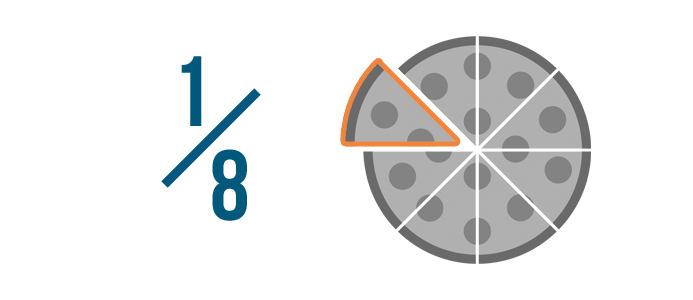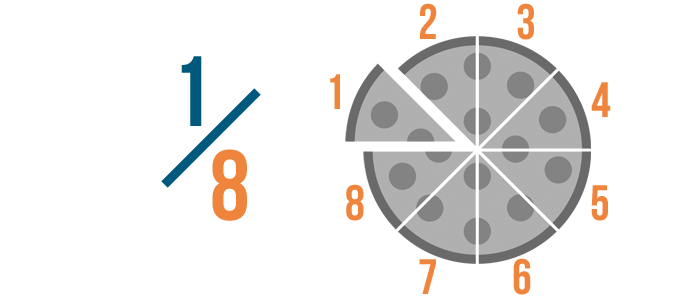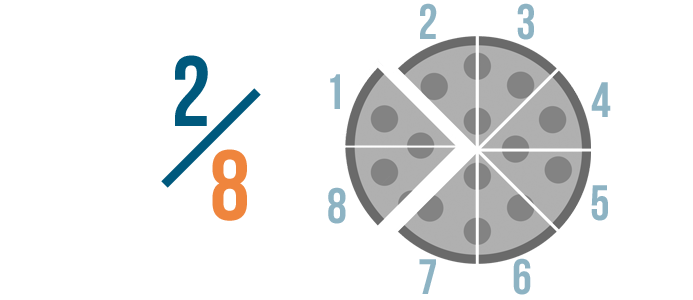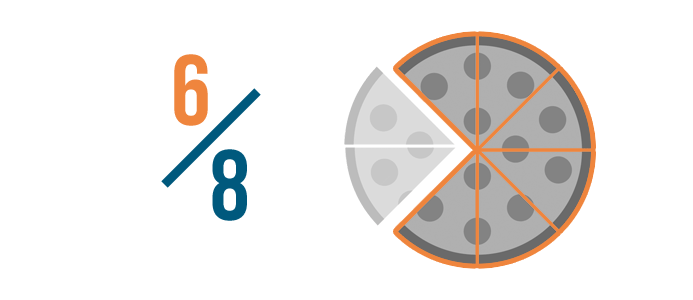What are Fractions?
A fraction is part of a whole. It's less than 1 whole thing, but more than 0. We use fractions all the time in real life. Have you ever ordered a quarter-pound burger? Or noticed that your gas tank is half full? Both of these are fractions of the whole amount—a whole pound of meat, or a whole tank of gas.
Fractions look a little like division expressions, but they aren't problems to be solved. They are a way of expressing an amount. Like numbers, fractions tell you how much you have of something.
Click through the slideshow to learn how fractions work.

Let's imagine that you have one pizza divided into 8 slices.

Say that you take 1 of the 8 slices.

You could say that you took 1/8 of the pizza. 1/8 is a fraction.

We write it like that because the pizza has 8 slices...

We write it like that because the pizza has 8 slices...and you're taking 1.

What if you take 2 slices?

Now you're taking 2/8 of the pizza.

The bottom number, 8, stayed the same, since the pizza is still divided into the same number of slices.

The top number changed, since we're talking about 2 slices now.

We could also say that 6/8 slices were left. There's less than 1 pizza, but more than 0 pizzas. That's why we use a fraction.

Let's look at another example of how you can use fractions to show part of something.

This coffee pot holds 4 cups of coffee. Right now it's full.

We could write this as a fraction: 4/4. 4 cups are there, out of 4 cups total.

As the morning goes on, the coffee pot gets emptier. Now there are 3 cups left, so it's 3/4 full.

Now, it's 2/4 full.

And now it's 1/4 full. We have less than 1 pot of coffee, but we still have more than 0 pots. We have a fraction of the pot left.























